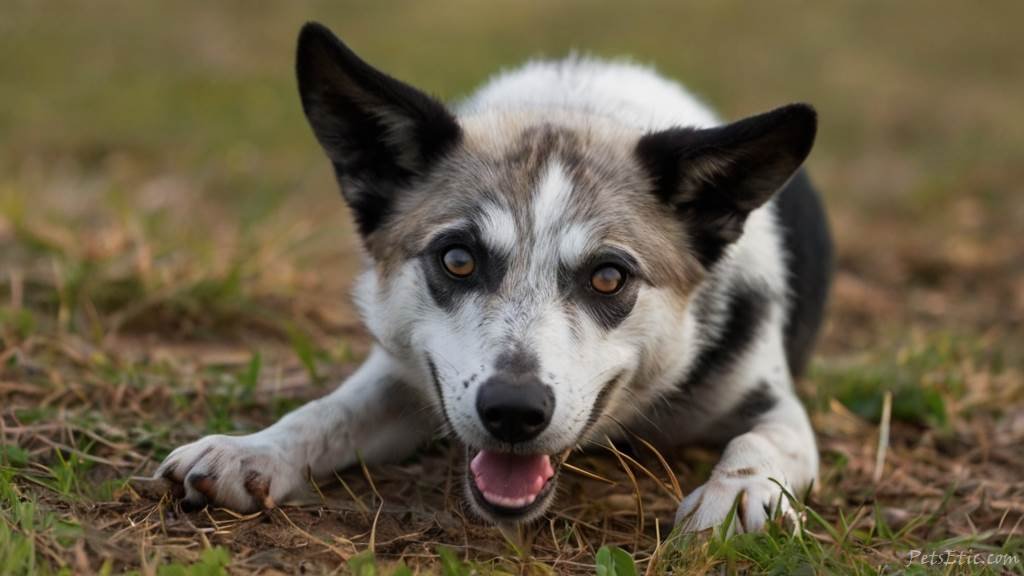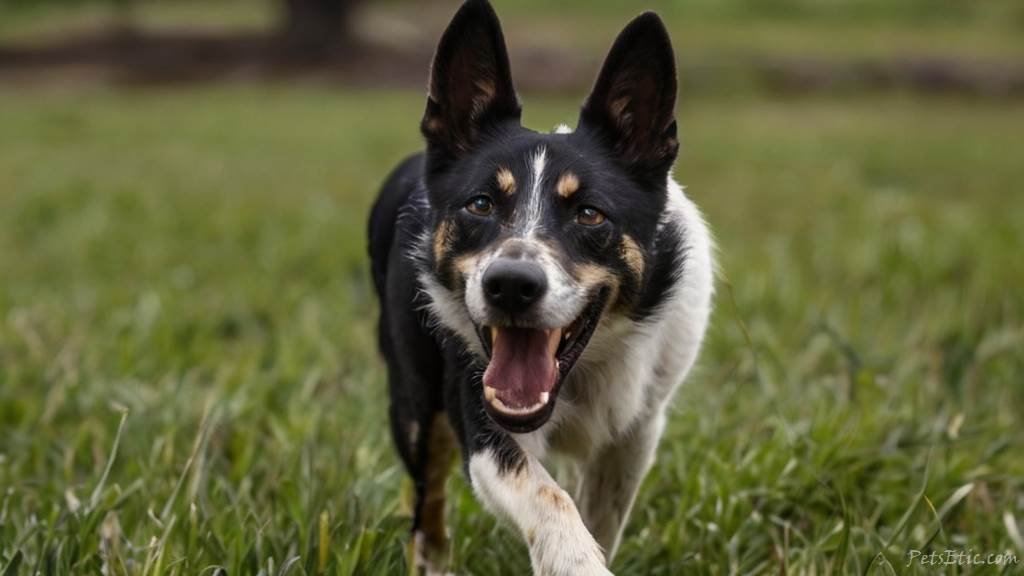Introduction
Rabies is a serious viral disease that affects animals, including our beloved canine companions. Knowing how to recognize the symptoms of rabies in dogs is crucial for the well-being of both pets and humans. Let’s delve into the importance of identifying these symptoms and understanding the key aspects of rabies in our furry friends.
Contents
ToggleRecognizing the Danger
Imagine this: you’re out for a leisurely stroll with your dog when suddenly, out of nowhere, a wild animal appears and bites your furry friend. It’s a scenario that pet owners hope never happens, but the reality is that encounters with rabid animals can occur unexpectedly. Understanding the signs of rabies in dogs can mean the difference between life and death for both your pet and yourself.
Shedding Light on Rabies
Rabies isn’t just your run-of-the-mill illness, it’s a deadly virus that attacks the nervous system of mammals, including dogs and humans. This virus is primarily transmitted through the saliva of infected animals, often through bites. Once symptoms appear, rabies is almost always fatal, making it essential to identify the warning signs early on.
Protecting Your Pooch
As responsible pet owners, it’s our duty to safeguard our furry companions from potential threats like rabies. By being vigilant and knowledgeable about the symptoms of rabies in dogs, we can take proactive measures to ensure their safety and well-being. So, let’s roll up our sleeves and explore the six telltale signs that your dog may have contracted rabies.

What is Rabies?
Rabies, often referred to as “hydrophobia,” is a viral disease that strikes fear into the hearts of both humans and animals alike. But what exactly is this menacing illness, and how does it wreak havoc on the body?
Definition and Transmission
At its core, rabies is caused by the rabies virus, a member of the Lyssavirus genus. This cunning virus primarily spreads through the saliva of infected animals, most commonly through bites or scratches. Once the virus enters the body, it travels through the nerves to the brain, where it begins its destructive rampage.
The Nervous System’s Nemesis
Picture this: the rabies virus, like a stealthy intruder, infiltrates the nervous system, launching a full-scale assault on the brain and spinal cord. As it replicates within nerve cells, it disrupts normal neurological function, leading to a myriad of symptoms that spell trouble for the infected individual.
Understanding the Severity and Fatality
Now, let’s not sugarcoat it—rabies is a grave matter. Unlike your typical flu or cold, this viral villain is virtually untreatable once symptoms rear their ugly heads. Without prompt medical intervention, rabies is almost always fatal. Yes, you heard that right—fatal.
This is why understanding the gravity of rabies is paramount. It’s not just a matter of a few sniffles and a fever—it’s a matter of life and death. That’s why education and awareness are our strongest weapons in the fight against this relentless foe.
So, the next time you hear someone downplaying the seriousness of rabies, gently remind them of its deadly consequences. After all, knowledge is power, and when it comes to rabies, ignorance is anything but bliss.

Signs that a Dog has Rabies
When it comes to our furry companions, their well-being is our top priority. Recognizing the signs that a dog may have rabies is crucial for ensuring their safety and the safety of those around them. Let’s take a closer look at the telltale symptoms that could indicate rabies in dogs.
Overview of Common Symptoms
Rabies doesn’t tiptoe in quietly—it makes its presence known through a variety of unmistakable signs. While the symptoms may vary from one dog to another, there are several key indicators that should raise red flags for pet owners.
Detailed Description of Six Key Symptoms
1. Aggressive Behavior and Uncharacteristic Aggression
Is your once-friendly pup suddenly showing signs of aggression? Dogs infected with rabies may exhibit uncharacteristic aggression, snapping or biting at anything that comes near them. This behavior can be particularly alarming, especially if your dog has always been docile and friendly.
2. Excessive Salivation or Foaming at the Mouth
Picture this: your dog, normally as dry as a bone, is suddenly drooling like a leaky faucet. Excessive salivation, often accompanied by foaming at the mouth, is a classic sign of rabies in dogs. If you notice your furry friend drooling excessively or producing frothy saliva, it’s time to sit up and take notice.
3. Paralysis or Weakness, Particularly in Hind Legs
Is your dog having trouble getting around? Rabies can cause paralysis or weakness, especially in the hind legs. You may notice your dog stumbling or dragging their back legs as if they’ve suddenly forgotten how to walk. This loss of coordination is a clear indicator that something is amiss.
4. Changes in Vocalization or Abnormal Vocalizations
Does your dog’s bark sound more like a howl from the depths of despair? Rabies can cause changes in vocalization or abnormal vocalizations, ranging from whimpering and whining to growling and howling. Pay attention to any unusual sounds coming from your furry friend—it could be a cry for help.
5. Disorientation and Erratic Behavior
Imagine your dog, normally as sharp as a tack, suddenly wandering aimlessly as if they’ve lost their way. Rabies can cause disorientation and erratic behavior, leaving your furry friend seemingly lost and confused. Keep an eye out for signs of confusion or aimless wandering—it could be a sign that rabies is at play.
6. Hypersensitivity to Touch, Light, or Sound
Is your dog suddenly recoiling at the slightest touch or flinching at the sound of a pin dropping? Rabies can cause hypersensitivity to touch, light, or sound, leaving your furry friend on edge and easily startled. If your dog seems unusually sensitive or jumpy, it’s worth investigating further.
Stay Vigilant, Stay Safe
Now that you’re armed with knowledge about the symptoms of rabies in dogs, it’s important to stay vigilant and keep a close eye on your furry companions. Remember, early detection is key to ensuring prompt medical intervention and the best possible outcome for your pet. So, keep an eye out for these telltale signs, and remember—better safe than sorry!

Where do Dogs Get Rabies?
Curious about where our furry friends might pick up this dreaded disease? Let’s dive into the nitty-gritty of how dogs contract rabies and the common sources of infection.
Explanation of How Dogs Contract Rabies
So, how exactly do our canine companions find themselves face-to-face with rabies? Well, it all boils down to one thing: exposure to the rabies virus. Dogs typically contract rabies through the saliva of infected animals, often during encounters that result in bites or scratches.
Discussion on Common Sources of Rabies Infection in Dogs
Animal Bites, Particularly from Wild Animals such as Bats, Raccoons, and Skunks
Picture this: your dog is out for a romp in the backyard when suddenly, a wild animal appears, teeth bared and ready to strike. Bites from wild animals such as bats, raccoons, and skunks are a common source of rabies infection in dogs. These animals can carry the rabies virus without showing any outward signs of illness, making it essential to be vigilant during outdoor excursions.
Exposure to Infected Saliva or Tissues
Ever heard the saying, “curiosity killed the cat”? Well, it can also put our canine companions at risk. Dogs may inadvertently come into contact with infected saliva or tissues from rabid animals while exploring their surroundings. Whether it’s sniffing around in the bushes or investigating a discarded carcass, dogs can easily pick up the rabies virus if they come into contact with contaminated materials.
Lack of Proper Vaccination and Preventive Measures
Now, here’s where responsible pet ownership comes into play. Ensuring that your furry friend is up-to-date on their rabies vaccination is crucial for preventing the spread of this deadly disease. Dogs who are not vaccinated against rabies are at a higher risk of contracting the virus, especially if they spend time outdoors or have frequent encounters with wildlife.
Stay One Step Ahead
Now that you’re armed with knowledge about the common sources of rabies infection in dogs, it’s important to take proactive measures to protect your furry companion. From keeping a close eye on them during outdoor adventures to ensuring they receive regular vaccinations, there are plenty of steps you can take to keep rabies at bay.
So, the next time you’re out and about with your four-legged friend, remember to stay vigilant and keep an eye out for potential risks. After all, when it comes to protecting our furry companions, a little prevention goes a long way.

4 Myths and Misconceptions about Dog Rabies
Let’s debunk some of the most common myths and misconceptions surrounding rabies in dogs. Strap in, folks—it’s time to separate fact from fiction!
Debunking Common Misconceptions
Rabies, with its ominous reputation, often breeds a slew of misconceptions. But fear not! We’re here to set the record straight and shine a light on the truth behind these myths.
Myth: Only Stray Dogs Can Get Rabies
Ah, the age-old belief that only stray dogs are susceptible to rabies. While it’s true that stray dogs may have a higher risk of exposure to rabid animals, no dog is immune to the threat of rabies. Even our beloved family pets can fall victim to this deadly disease if they come into contact with an infected animal.
Myth: Rabid Dogs Always Exhibit Aggressive Behavior
Picture this: a rabid dog, foaming at the mouth and baring its teeth in a menacing snarl. While this may be the stuff of nightmares, the reality is that not all rabid dogs exhibit aggressive behavior. In fact, some may appear lethargic or withdrawn, making it difficult to identify them as carriers of the virus. It’s important to remember that rabies can manifest in various ways, and aggression is just one possible symptom.
Myth: Rabies is Not a Serious Concern with Domesticated Pets
Ah, the classic misconception that our furry companions are safe from the clutches of rabies. While it’s true that domesticated pets may have a lower risk of exposure compared to their wild counterparts, rabies is still a serious concern for pet owners. All it takes is one unfortunate encounter with a rabid animal to put your beloved pet at risk. That’s why staying vigilant and ensuring your pet is up-to-date on their vaccinations is crucial for their safety.
Myth: Rabies is Curable Once Symptoms Appear
Now here’s a myth that needs busting—rabies is curable once symptoms appear. Unfortunately, once the symptoms of rabies manifest, it’s usually too late for treatment. Rabies is almost always fatal once it reaches the symptomatic stage, making prevention and early intervention key to saving lives. That’s why it’s essential to seek medical attention immediately if you suspect your pet has been exposed to rabies.
Separating Fact from Fiction
Now that we’ve debunked these common myths about rabies in dogs, it’s important to spread the word and educate others about the truth behind this deadly disease. By arming ourselves with knowledge and dispelling misconceptions, we can work together to protect our furry companions and keep them safe from the threat of rabies.

How to Prevent Your Dog from Getting Rabies
Ensuring the safety of our furry companions is a top priority for any pet owner. When it comes to preventing rabies, being proactive is key. Let’s explore some effective strategies and measures to safeguard your dog from this deadly disease.
Vaccination: Importance of Regular Rabies Vaccination for Dogs
Let’s start with the basics—vaccination. Just like we humans need our shots to stay healthy, our canine pals also require regular vaccinations to fend off rabies. The rabies vaccine is highly effective in preventing the spread of the virus and providing long-lasting protection for your furry friend. So, don’t skip out on those vet appointments—make sure your dog stays up-to-date on their rabies vaccinations.
Supervision and Confinement: Keeping Dogs Indoors or in Fenced Areas
Next up, supervision and confinement. While it’s tempting to let your dog roam free, especially on sunny days, keeping them indoors or in fenced areas is crucial for their safety. By limiting their exposure to potential rabies carriers, such as wild animals, you can significantly reduce the risk of your dog contracting the virus. So, when in doubt, keep a close eye on your furry friend and ensure they stay within the safety of your home or yard.
Avoiding Wildlife Encounters: Limiting Exposure to Potentially Rabid Animals
Wildlife encounters may seem like an exciting adventure for our four-legged companions, but they can also spell trouble. To prevent your dog from getting rabies, it’s essential to limit their exposure to potentially rabid animals. Whether it’s a curious sniff around the bushes or a chance encounter with a raccoon, always err on the side of caution and steer clear of wildlife hotspots. Remember, it’s better to be safe than sorry.
Prompt Veterinary Care: Seeking Medical Attention for Any Suspicious Behavior or Wounds
Last but certainly not least, prompt veterinary care is essential for keeping rabies at bay. If you notice any suspicious behavior or wounds on your furry friend, don’t hesitate to seek medical attention right away. Early detection and treatment can make all the difference in ensuring the best possible outcome for your dog. So, trust your instincts and don’t delay—your furry friend’s health depends on it.
Stay One Step Ahead
By following these strategies and measures, you can take proactive steps to protect your dog from rabies and ensure their safety and well-being. Remember, prevention is key, so don’t wait until it’s too late. With a little vigilance and a lot of love, you can keep your furry companion safe and sound for years to come.

Has Anyone Survived Rabies?
Surviving rabies is like finding a needle in a haystack—it’s incredibly rare, but it does happen. Let’s delve into the extraordinary cases of human survival from rabies and explore the medical interventions and treatments that made it possible.
Exploration of Rare Cases of Human Survival from Rabies
You might be wondering—is it even possible to survive rabies? Well, believe it or not, there have been a handful of miraculous cases where individuals have defied the odds and emerged victorious against this deadly disease. While these cases are few and far between, they serve as beacons of hope in the face of adversity.
Examination of Medical Interventions and Treatments in These Cases
So, what’s the secret to surviving rabies? It all boils down to swift and aggressive medical intervention. In these rare cases of survival, doctors employed a combination of treatments, including induced comas, antiviral medications, and experimental therapies, to combat the rabies virus and give patients a fighting chance.
Discussion on the Challenges and Limitations of Surviving Rabies Infection
Surviving rabies isn’t just a walk in the park—it’s a grueling battle with no guarantees of victory. Despite the best efforts of medical professionals, the challenges and limitations of surviving rabies infection loom large. From the severity of symptoms to the potential long-term effects of the virus, the road to recovery is fraught with obstacles.
Stay Hopeful, Stay Informed
While surviving rabies remains an extraordinary feat, it’s important to stay hopeful and informed. By understanding the remarkable cases of survival and the medical interventions that made them possible, we can gain insight into the complexities of this deadly disease and the strides being made in the field of rabies research and treatment.
So, the next time you hear about a rare case of survival from rabies, remember—it’s a testament to the resilience of the human spirit and the power of modern medicine. And who knows? With continued advancements in treatment and technology, the odds of survival may just tip in our favor.

Can You Get Rabies from a Non-Rabid Dog?
Curious about whether your furry friend could unwittingly transmit rabies? Let’s unravel the mystery surrounding the risk of rabies transmission from seemingly healthy dogs and explore the nuances of this potential threat.
Clarification on the Risk of Rabies Transmission from Seemingly Healthy Dogs
You might assume that if a dog appears healthy and free from symptoms, they couldn’t possibly pose a risk of rabies transmission. However, the truth is a bit more complicated. While it’s true that rabies is typically associated with visibly sick animals, including dogs, the virus can still lurk beneath the surface, undetectable to the naked eye.
Explanation of Potential Scenarios Where Transmission May Still Occur
So, how exactly could a seemingly healthy dog transmit rabies? Well, it all comes down to the intricacies of rabies transmission dynamics. Even dogs that appear healthy may carry the rabies virus in their saliva, posing a risk of transmission through bites or scratches. Additionally, dogs may come into contact with rabid animals without exhibiting symptoms themselves, further complicating the transmission landscape.
Importance of Understanding Rabies Transmission Dynamics for Human Safety
Understanding the complexities of rabies transmission dynamics is crucial for human safety. While the risk of rabies transmission from non-rabid dogs may be relatively low, it’s not something to be taken lightly. By recognizing the potential for transmission from apparently healthy animals, individuals can take proactive measures to protect themselves and their communities.
Stay Vigilant, Stay Safe
So, what’s the bottom line? While the risk of rabies transmission from non-rabid dogs may be rare, it’s still important to exercise caution and stay vigilant. Avoiding contact with unfamiliar animals, practicing proper wound care in the event of bites or scratches, and ensuring that pets are up-to-date on their vaccinations are all essential steps in preventing the spread of rabies.
By staying informed and taking proactive measures, we can help mitigate the risk of rabies transmission and keep ourselves and our furry companions safe from harm. After all, when it comes to rabies prevention, knowledge is power.

Can a Dog Have Rabies without Symptoms?
Ever wondered if your furry friend could be harboring the rabies virus without showing any signs? Let’s dive into the intriguing concept of asymptomatic rabies in dogs and explore what it means for diagnosis, prevention, and overall vigilance.
Discussion on the Concept of Asymptomatic Rabies in Dogs
Asymptomatic rabies—sounds like something straight out of a mystery novel, doesn’t it? Well, it’s not quite as mysterious as it sounds. In simple terms, asymptomatic rabies refers to a situation where a dog carries the rabies virus without exhibiting any outward signs or symptoms of the disease. While this may seem puzzling, it’s actually not uncommon in the world of infectious diseases.
Overview of Subclinical Rabies and Its Implications for Diagnosis and Prevention
Now, you might be wondering—how on earth do you diagnose a disease that doesn’t show any symptoms? That’s where subclinical rabies comes into play. Subclinical rabies refers to a phase of the disease where the virus is present in the body but hasn’t yet caused any noticeable symptoms. While dogs in this stage may appear healthy and normal, they still have the potential to transmit the virus to other animals or humans through saliva.
Importance of Vigilance and Early Detection in Suspected Cases
So, what does all of this mean for pet owners and veterinarians? It means staying vigilant and being proactive in suspected cases of rabies. Even if your dog seems perfectly healthy, it’s important to keep an eye out for any unusual behavior or changes in temperament. Early detection is key to preventing the spread of rabies and ensuring the safety of both animals and humans alike.
Stay Informed, Stay Safe
While the concept of asymptomatic rabies may seem daunting, it’s important not to panic. By staying informed and educated about the signs and symptoms of rabies, pet owners can take proactive steps to protect their furry companions and prevent the spread of the virus. Remember, when it comes to rabies prevention, knowledge is power. So, keep those eyes peeled and those tails wagging—let’s keep our furry friends safe and sound.

Can a Vaccinated Dog Get Rabies?
Ever wondered if your furry friend, who’s faithfully kept up with their rabies vaccinations, could still be at risk? Let’s delve into the effectiveness of rabies vaccination in dogs, explore rare instances of vaccinated dogs contracting rabies, and unravel the factors that could influence vaccine efficacy.
Explanation of the Effectiveness of Rabies Vaccination in Dogs
You’ve probably heard it a thousand times—vaccination is the key to preventing rabies in dogs. And for the most part, it’s true! Rabies vaccinations are highly effective in providing long-lasting immunity against the virus. By stimulating the dog’s immune system to produce antibodies that fight off the rabies virus, vaccines help safeguard our furry companions from this deadly disease.
Discussion on Rare Instances of Vaccinated Dogs Contracting Rabies
But wait—can vaccinated dogs still get rabies? While it’s extremely rare, there have been isolated cases where vaccinated dogs have contracted the virus. How is this possible, you ask? Well, vaccine failure or incomplete immune response could be to blame. In some cases, the dog’s immune system may not mount a strong enough defense against the rabies virus, leaving them vulnerable to infection despite being vaccinated.
Factors Influencing Vaccine Efficacy and Potential Causes of Vaccine Failure
So, what factors could influence vaccine efficacy and potentially lead to vaccine failure? Several factors come into play, including the dog’s age, overall health, and the quality of the vaccine itself. Additionally, improper storage or administration of the vaccine could compromise its effectiveness. While these instances are rare, they serve as a reminder of the importance of proper vaccination protocols and ongoing research to improve vaccine efficacy.
Stay Informed, Stay Protected
While the idea of a vaccinated dog contracting rabies may seem alarming, it’s essential to keep things in perspective. Vaccination remains the most effective tool in preventing rabies in dogs and reducing the risk of transmission to humans. By staying informed about the latest vaccine recommendations and ensuring that your furry friend stays up-to-date on their shots, you can help keep them safe from rabies and enjoy many happy, healthy years together.
Remember, when it comes to protecting our furry companions, a little prevention goes a long way. So, keep those vaccinations current, keep those tails wagging, and let’s keep rabies at bay!





